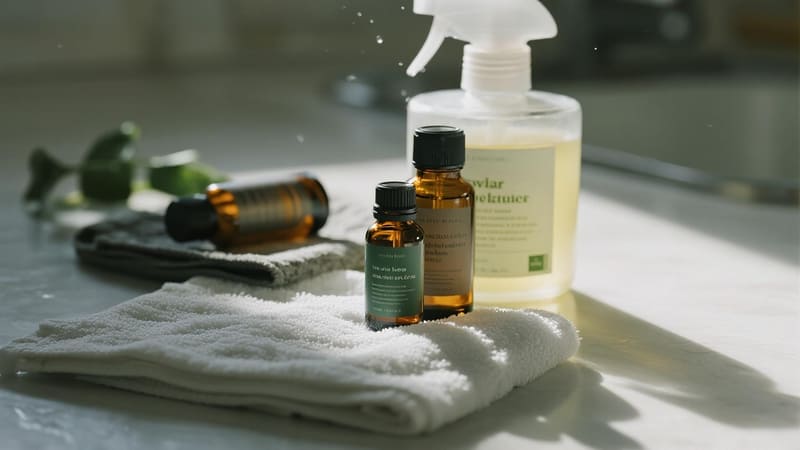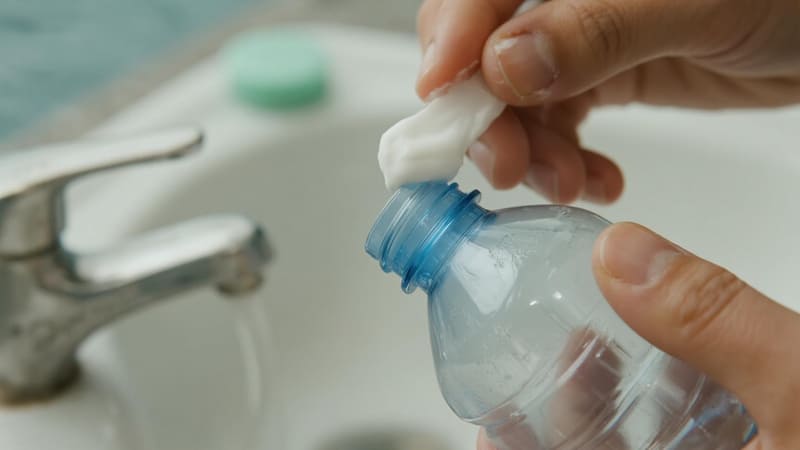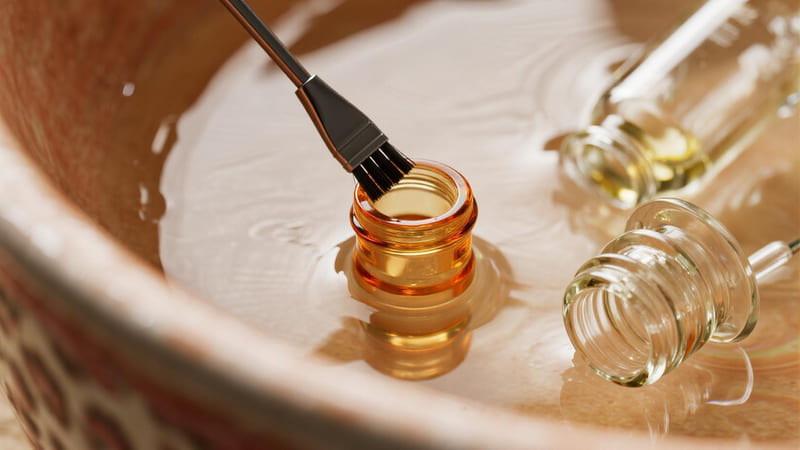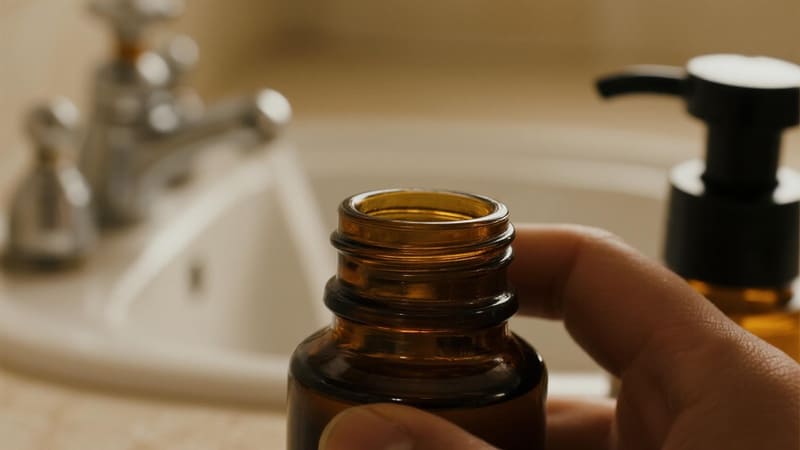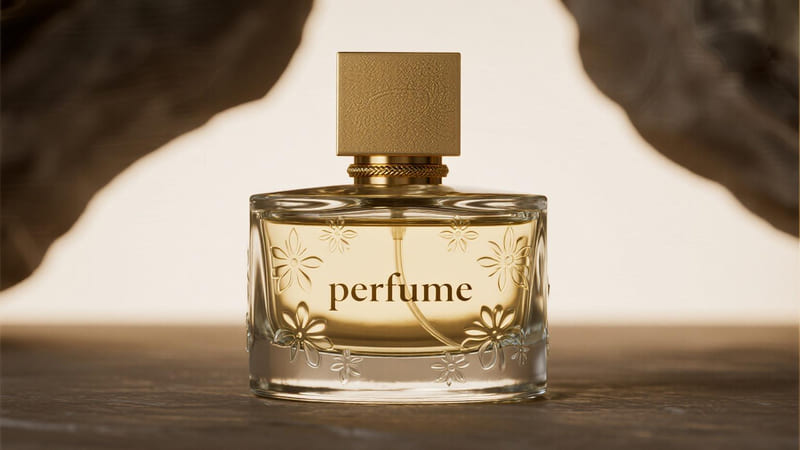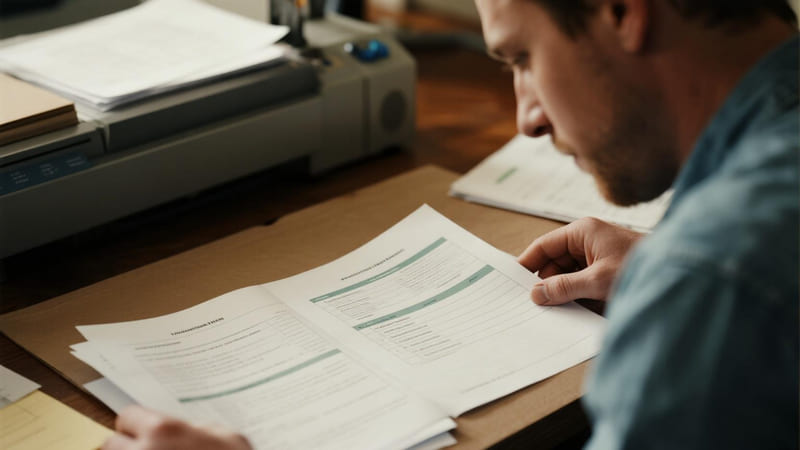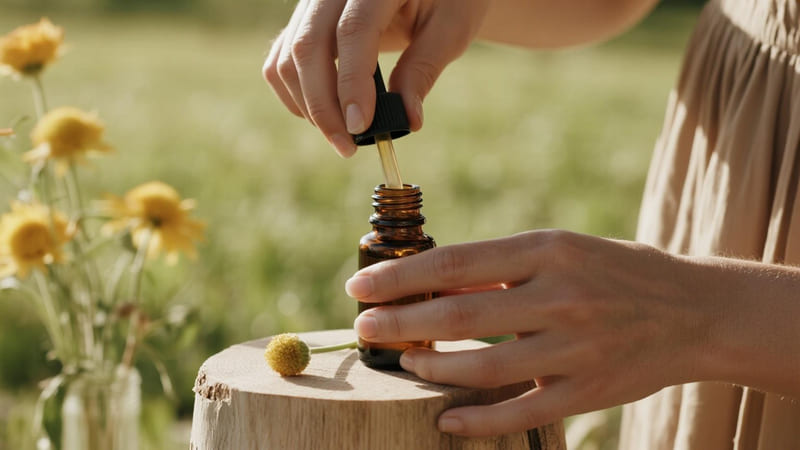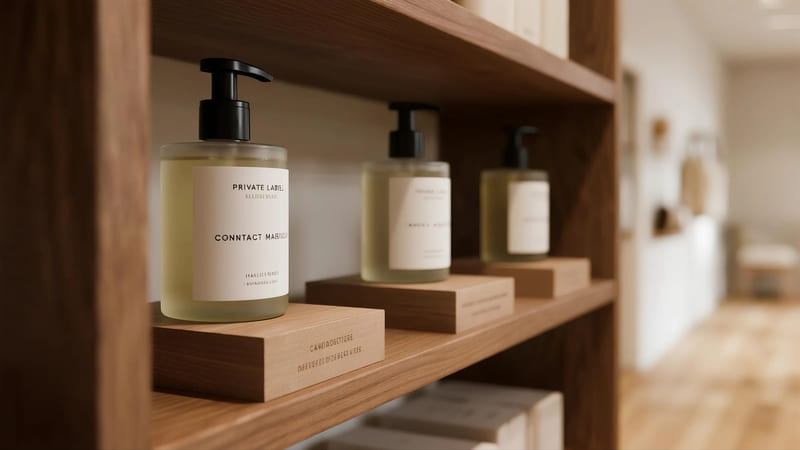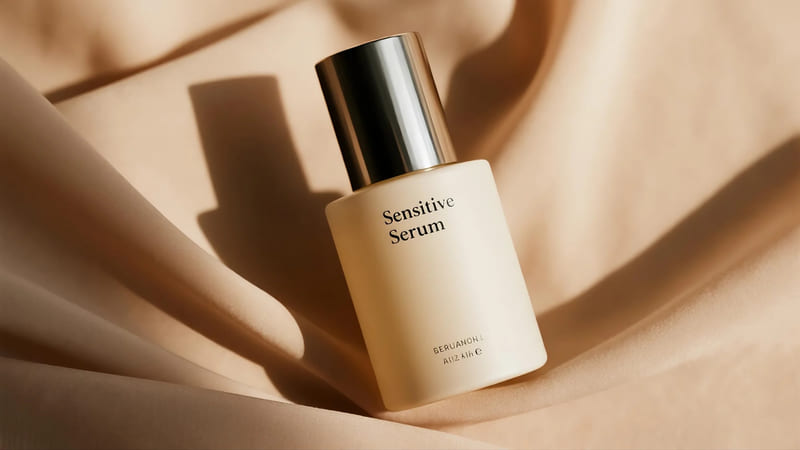Whether you’re an avid essential oil user looking to reuse your precious amber glass bottles or a DIY enthusiast preparing containers for a new blend, knowing how to clean them thoroughly is essential. A proper cleaning removes oily residue, lingering scents, and ensures your bottle is ready for its next life.
To clean essential oil bottles, first disassemble all parts (bottle, orifice reducer, cap). Soak the glass bottle and plastic components in hot, soapy water, then use a bottle brush for scrubbing. For stubborn residue and odors, follow with a soak in rubbing alcohol or a vinegar solution, then rinse thoroughly and allow all parts to air dry completely.
Cleaning these bottles is a simple process that ensures they are hygienic and free from any old scents that could interfere with your new creations. As a packaging manufacturer with ShineTop, we know the importance of a clean container for product integrity. Here’s your step-by-step guide.
How to Remove Essential Oil Stains from Plastic Bottles?
While it’s generally not recommended to store pure essential oils in plastic, you might use plastic for diluted blends or find that some oils have stained a plastic component, like an orifice reducer.
To remove essential oil stains from plastic bottles or components, create a paste of baking soda and water and gently scrub the stained area with a soft brush or cloth. For tougher stains, soaking the plastic item in a solution of equal parts white vinegar and water, or in rubbing alcohol, can help break down the oily, colored residue.
Essential oils can sometimes leach into or stain plastic, making them tricky to clean.
Methods for Cleaning Stained Plastic:
-
Baking Soda Scrub (Gentle Abrasive):
- Create a thick paste with baking soda and a small amount of water.
- Apply the paste to the stained areas of the plastic.
- Use a small bottle brush, an old toothbrush, or a cloth to gently scrub the paste over the stain.
- Rinse thoroughly with hot, soapy water.
-
Vinegar Soak (Acidic Cleaner):
- Create a solution of one part white vinegar to one part warm water.
- Submerge the stained plastic item in the vinegar solution and let it soak for several hours or overnight.
- After soaking, wash with hot, soapy water.
-
Rubbing Alcohol (Solvent):
- Isopropyl alcohol is effective at dissolving many oil-based residues.
- Soak the plastic component in 70% isopropyl alcohol for an hour or more.
- Follow up with a thorough wash in hot, soapy water to remove any alcohol residue.
-
Sunlight (for some stains):
- After cleaning, placing the clear or light-colored plastic item in direct sunlight for a few hours can sometimes help to naturally bleach out remaining stains.
Important Note: Some essential oils, particularly dark or colorful ones like German Chamomile (blue) or some citrus oils (yellow), can permanently stain certain types of plastic. If the stain persists after these methods, it may not be fully removable. This is a key reason why glass is the preferred material for essential oil storage.
How Do You Clean the Inside of an Oil Bottle?
Cleaning the oily film from the inside of any oil bottle, whether it held essential oils or cooking oils, requires a method that can effectively break down and wash away the grease.
To clean the inside of an oil bottle, first pour out any excess oil. Then, add a few drops of strong dish soap and hot water into the bottle. Shake vigorously to create a lather that breaks down the oil. Use a thin bottle brush to scrub the interior walls. For stubborn residue, add uncooked rice or coarse salt with the soap and water and shake to act as an abrasive scrubber.
A combination of a good degreasing soap and mechanical scrubbing is key.
Step-by-Step Cleaning Process:
- Empty the Bottle: Pour out as much of the old oil as possible into the trash (do not pour large amounts of oil down the drain).
- Add Soap & Hot Water:
- Put a few drops of a good quality dish soap (one known for cutting grease) into the bottle.
- Fill the bottle about one-third to one-half full with the hottest tap water you can safely handle.
- Shake Well:
- Secure the cap (or use your thumb to cover the opening) and shake the bottle vigorously for 30-60 seconds. The soap and water will emulsify the remaining oil.
- Scrub with a Bottle Brush:
- Use a long, thin bottle brush to scrub the inside walls, bottom, and neck of the bottle to dislodge any clinging residue.
- The Abrasive Method (for stubborn residue):
- If a brush can’t reach everything, empty the bottle and add a tablespoon of uncooked rice or coarse salt along with the dish soap and a little hot water.
- Cap the bottle and shake vigorously. The rice or salt will act as an abrasive, scrubbing the inside surfaces.
- Rinse Thoroughly:
- Empty the soapy water/rice mixture into the trash.
- Rinse the bottle several times with clean, hot water until no soap bubbles remain.
- Final Sanitizing Rinse (Optional but Recommended for Reuse):
- For essential oil bottles you plan to reuse, follow up with a final rinse using rubbing alcohol or a vinegar solution (see below) to remove odors and sanitize.
- Air Dry Completely:
- Place the bottle upside down on a drying rack to allow all moisture to evaporate before reusing.
How to Clean an Essential Oil Dispenser?
The "dispenser" on an essential oil bottle usually refers to the orifice reducer (the plastic dropper insert) or a glass dropper pipette. These small parts also need thorough cleaning to remove residue and old scents.
To clean an essential oil dispenser, disassemble it from the bottle. Soak the plastic orifice reducer or the glass pipette and rubber bulb in hot, soapy water. Use a small pipe cleaner or brush to clean inside the pipette. For strong odors or residue, soak the components (except the rubber bulb) in rubbing alcohol or a vinegar solution, then rinse and air dry completely.
Cleaning these small parts ensures they are hygienic and won’t contaminate your next blend.
Cleaning an Orifice Reducer:
- Remove: Use an essential oil key tool or the bottle cap to safely pry the plastic reducer from the bottle neck.
- Soak: Place it in a bowl of hot, soapy water for at least 10-15 minutes.
- Clean the Hole: Use a pin or a fine-tipped brush to ensure the tiny dispensing hole is clear.
- Rinse & Dry: Rinse thoroughly and let it air dry completely.
Cleaning a Glass Dropper Assembly:
- Disassemble: Gently pull the glass pipette out from the rubber bulb/plastic collar. You can also usually separate the rubber bulb from the collar.
- Wash Components Separately:
- Glass Pipette: Wash in hot, soapy water. Use a thin pipe cleaner or a specialized small brush to scrub the inside.
- Plastic Collar: Wash in hot, soapy water.
- Rubber/Silicone Bulb: Wash in hot, soapy water. Squeeze it several times while submerged to clean the inside.
- Deodorize & Sanitize (if needed):
- Soak the glass pipette and plastic collar in rubbing alcohol or a vinegar/water solution to remove stubborn odors. Avoid soaking the rubber bulb in alcohol for long periods, as it can cause the rubber to degrade over time. A quick wipe or rinse with alcohol is usually fine.
- Rinse & Dry: Rinse all parts thoroughly with clean water. Squeeze the bulb to expel all water. Let every single piece air dry completely before reassembling. Any trapped moisture can compromise your next oil blend.
How to Get Essential Oil Smell Out of Bottle?
Essential oils are potent, and their scents can cling to glass and plastic components stubbornly. Getting the bottle truly odor-free is the final and most important step before reusing it for a different oil.
To get a lingering essential oil smell out of a bottle, after washing with soap and water, soak the bottle and its components in either 70% isopropyl (rubbing) alcohol or a solution of equal parts white vinegar and water for several hours or overnight. For very strong odors, a soak in a baking soda and water solution can also help. Rinse and let air dry completely, preferably in the sun.
These methods work to neutralize or dissolve the aromatic compounds causing the odor.
Effective Deodorizing Methods:
-
Rubbing Alcohol Soak (Very Effective):
- Why it Works: Alcohol is an excellent solvent that can dissolve many residual aromatic oils that water and soap leave behind.
- Method: After a basic wash, submerge the glass bottle, glass pipette, and plastic components (orifice reducer, dropper collar) in 70% isopropyl alcohol. Let them soak for at least a few hours, or overnight for very strong scents like Patchouli or Vetiver.
- Afterwards: Rinse thoroughly with water and let air dry.
-
White Vinegar Soak:
- Why it Works: The acidity of vinegar helps to neutralize many odor-causing molecules.
- Method: Create a 50/50 solution of white vinegar and warm water. Submerge the bottle and components and let them soak overnight.
- Afterwards: Rinse very well with water to remove the vinegar smell. The vinegar scent will dissipate as it dries.
-
Baking Soda Soak:
- Why it Works: Baking soda is a natural deodorizer that absorbs odors.
- Method: Create a solution of warm water and a few tablespoons of baking soda. Let the bottle and parts soak overnight.
- Afterwards: Rinse thoroughly and let air dry.
-
Sunlight & Fresh Air:
- Why it Works: UV light can help break down some remaining aromatic compounds, and fresh air helps everything dissipate.
- Method: After cleaning and rinsing, place the open bottle and its parts in a sunny, well-ventilated spot to dry for a full day.
Pro Tip: For extremely persistent odors, you might need to combine methods. For example, do a vinegar soak, rinse, then do a quick alcohol rinse before the final water rinse and air dry. With a little patience, you can get your bottles back to a neutral state, ready for your next aromatic adventure.
Conclusion
Cleaning essential oil bottles for reuse is a simple and sustainable practice. A thorough wash with hot, soapy water followed by a soak in rubbing alcohol or vinegar will effectively remove oily residues and lingering scents from glass bottles and their dispenser parts. By ensuring every component is completely clean and dry, you can safely and confidently give your beautiful bottles a new purpose, whether for a new essential oil blend, a DIY creation, or another creative upcycling project.

